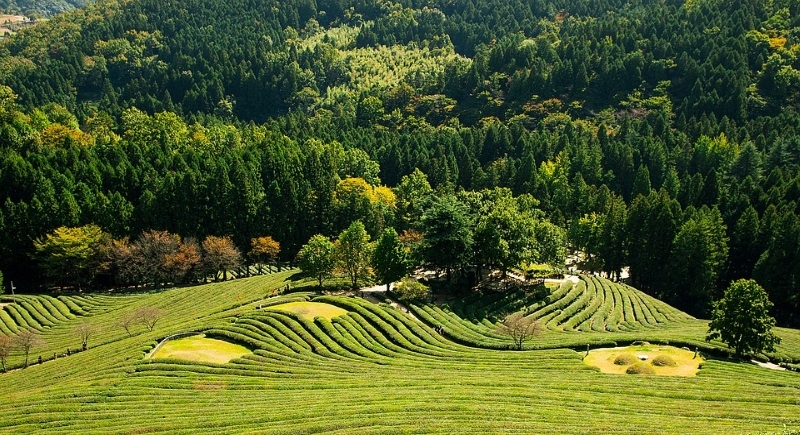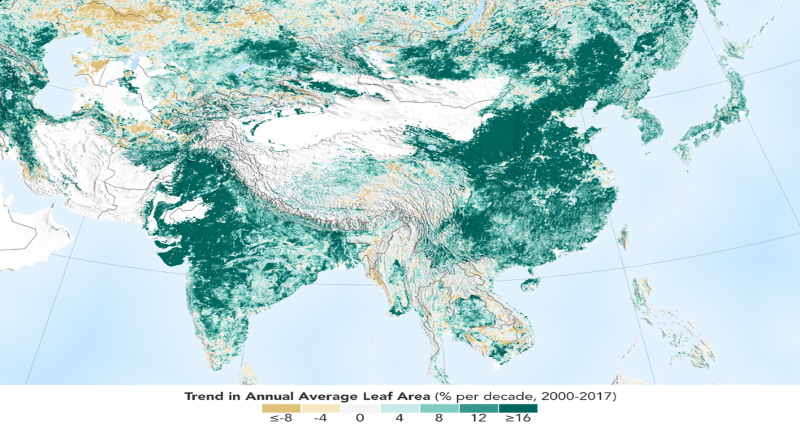The world is a greener place than it was 20 years ago!

California, Feb 12: The new data from NASA is astonishing enough…when the world is shouting about lack of green cover, deforesting, but data from NASA satellites has revealed otherwise.
The new foliage areas are India and China.
A new study shows that the two countries with the world’s biggest populations are leading the increase in greening on land. The effect come up mainly from an ambitious tree planting agenda in China and intensive agriculture in both countries.
This insight was possible by nearly 20-years data record from a NASA instrument called ‘Moderate Resolution Imaging Spectroradiometer’ or ‘MODIS’ orbiting the Earth on two satellites. The high-resolution data provides very precise information, helping researchers work out details of what’s happening with Earth’s vegetation, down to the level of 500 meters, or about 1,600 feet on the ground.
The greening of the planet over the last two decades represents an increase in leaf area on plants and trees equivalent to the area covered by all the Amazon rainforests.
“China and India account for one-third of the greening, but contain only 9% of the planet’s land area covered in vegetation – a surprising finding, considering the general notion of land degradation in populous countries from overexploitation,” said Chi Chen of the Department of Earth and Environment at Boston University, in Massachusetts, and lead author of the study.
82% of the greening seen in India, coming from intensive cultivation of food crops, in China with an outsized contribution to the global greening trend comes from programs to conserve and expand forests.
Land area used to grow crops is comparable in China and India – more than 770,000 square miles – and has not changed much since the early 2000s. Yet these regions have greatly increased both their annual total green leaf area and their food production. This was achieved through multiple cropping practices, where a field is replanted to produce another harvest several times a year. Production of grains, vegetables, fruits and more have increased by about 35-40% since 2000 to feed their large populations.

But, now that we know direct human influence is a key driver of the Greening Earth, we need to factor this into our climate models,” Nemani said. “This will help scientists make better predictions about the behavior of different Earth systems, which will help countries make better decisions about how and when to take action.”
The researchers point out that the gain in greenness seen around the world and dominated by India and China does not offset the damage from loss of natural vegetation in tropical regions, such as Brazil and Indonesia. The consequences for sustainability and biodiversity in those ecosystems remain.
This research was published online, Feb. 11, 2019, in the journal Nature Sustainability.
Overall, Nemani sees a positive message in the new findings. “Once people realize there’s a problem, they tend to fix it,” he said. “In the 70s and 80s in India and China, the situation around vegetation loss wasn’t good; in the 90s, people realized it; and today things have improved. Humans are incredibly resilient. That’s what we see in the satellite data.”